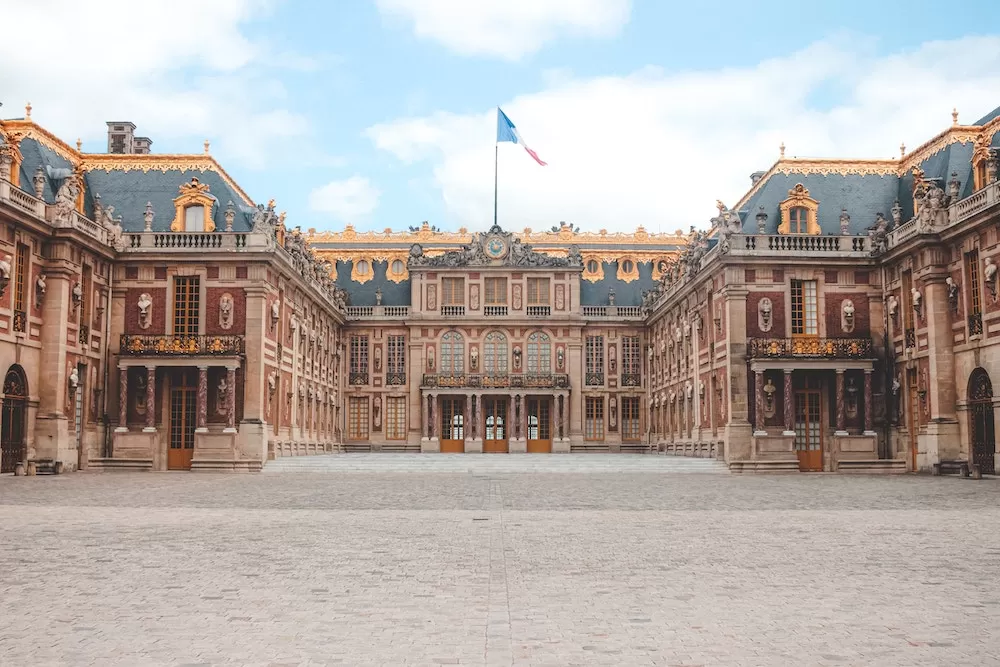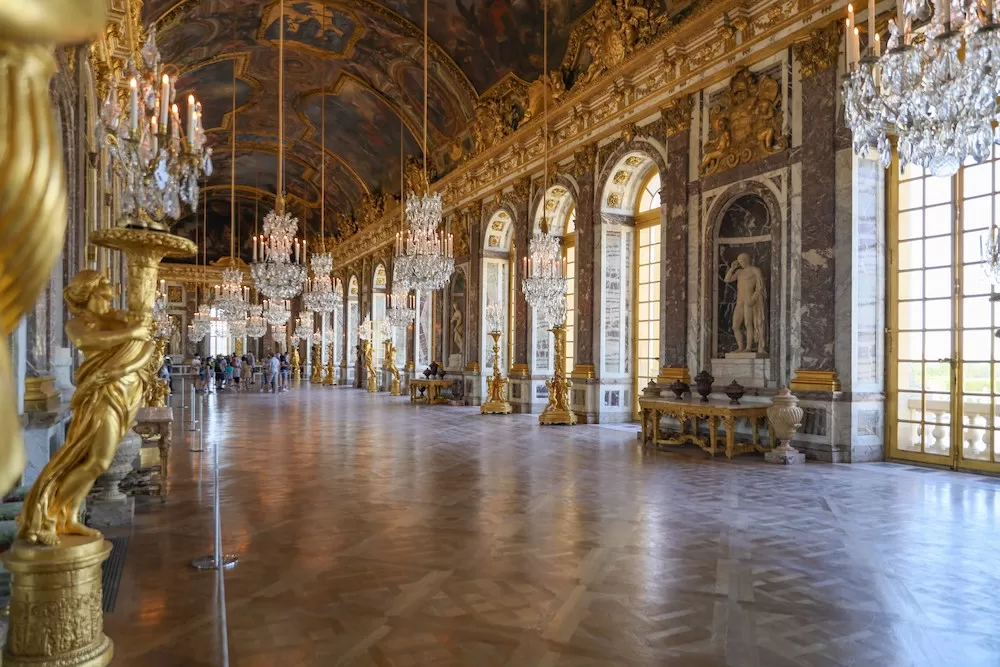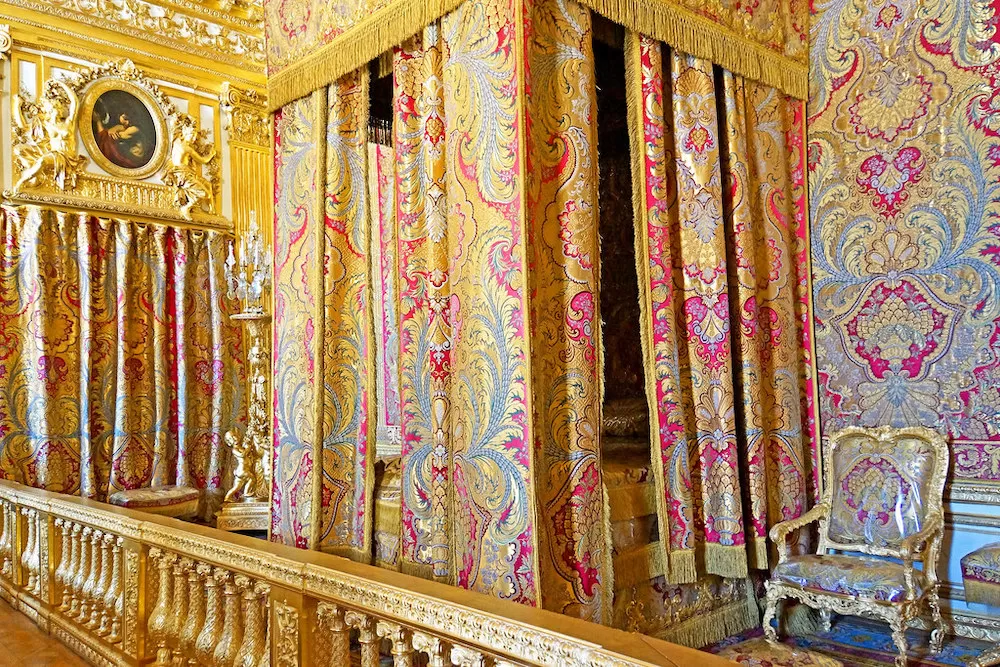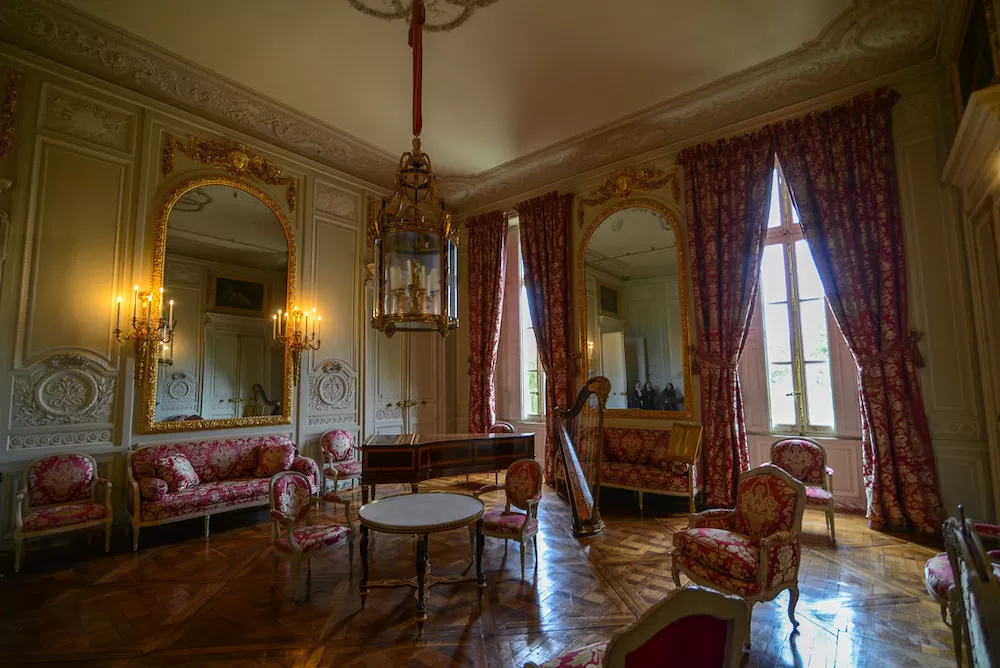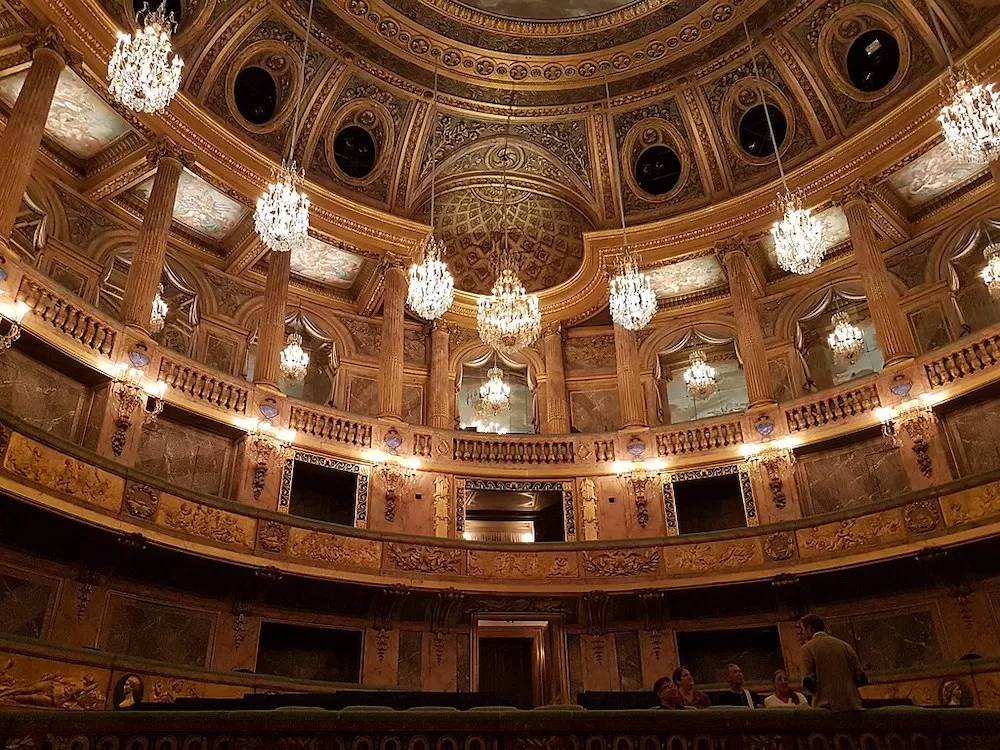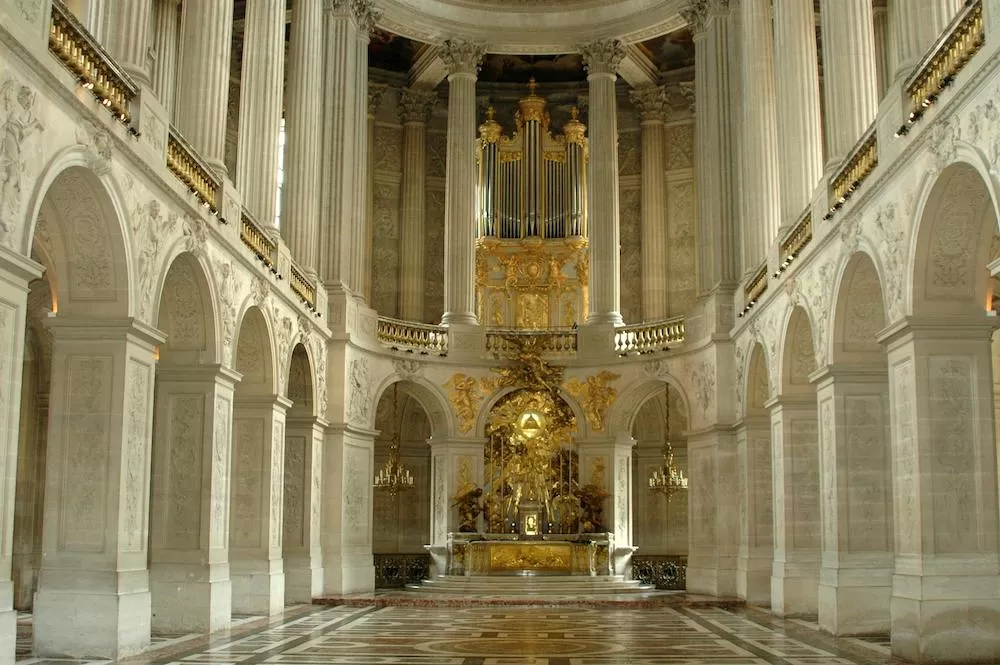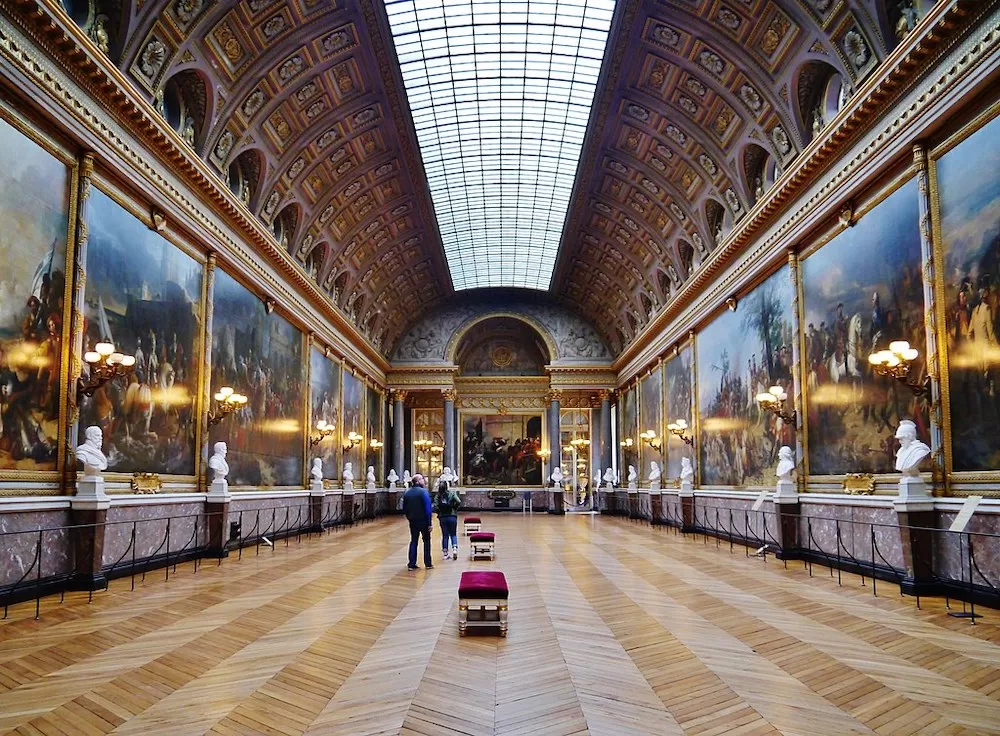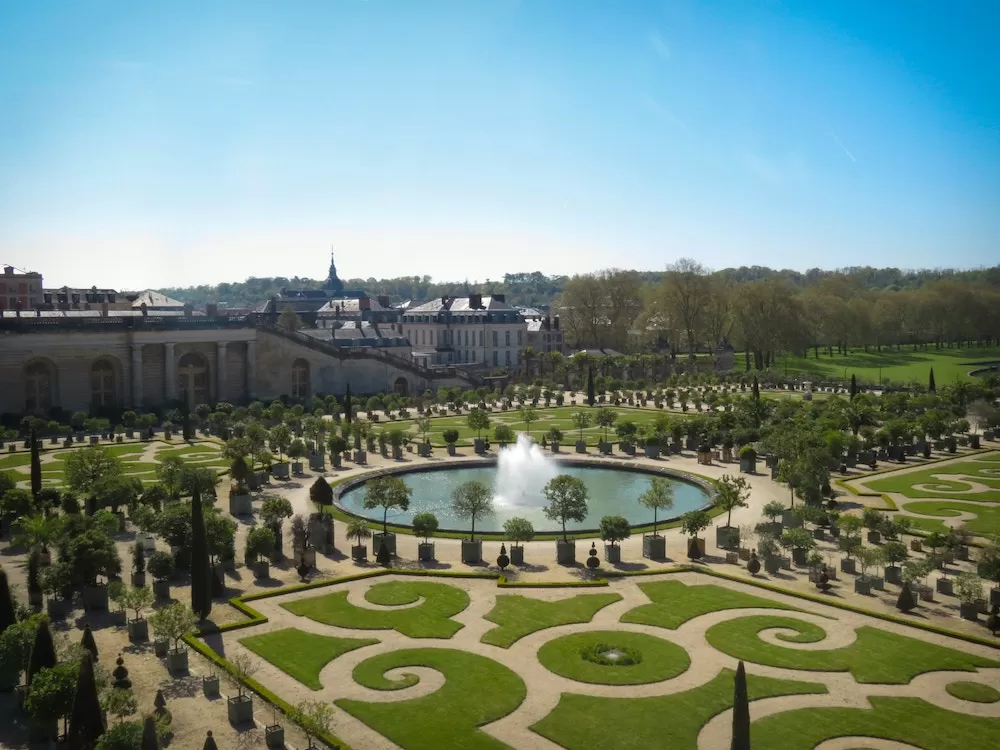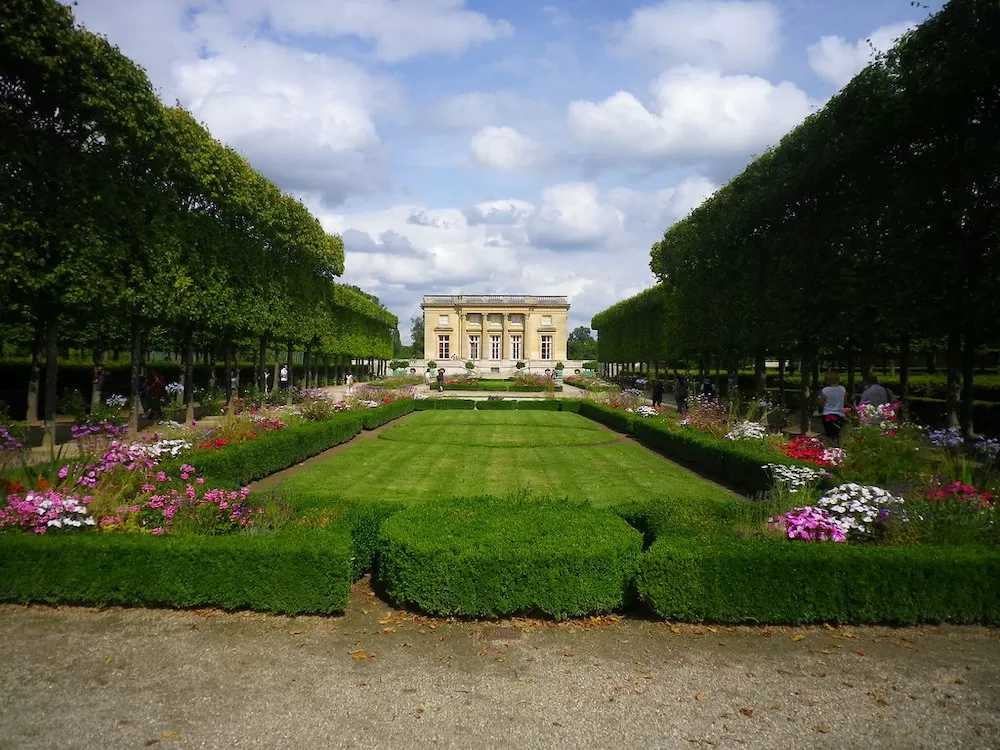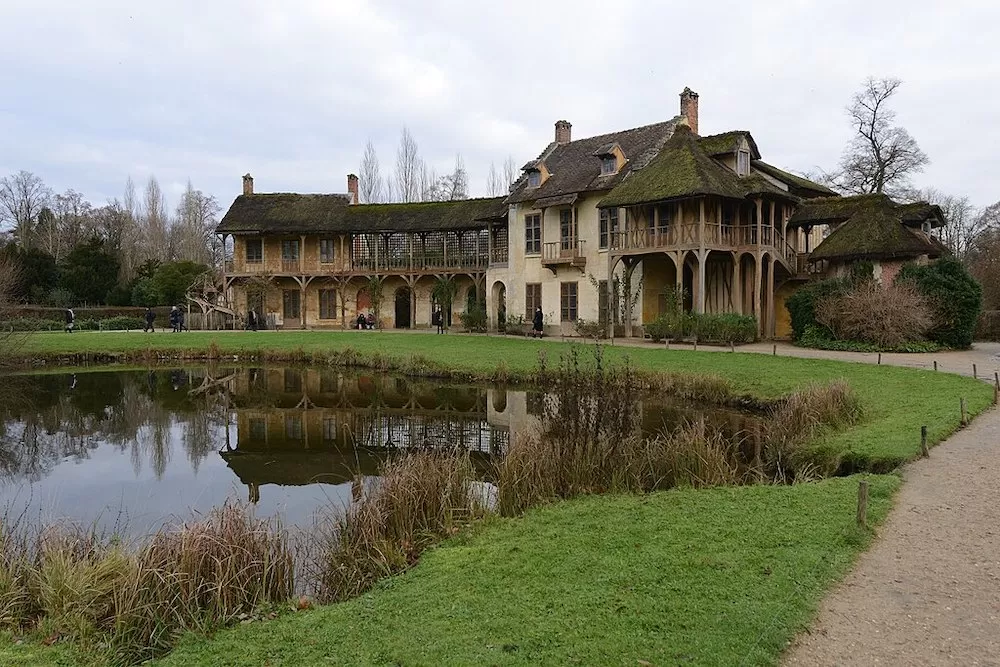No one would blame you if you wanted to see the Palaces of Versailles. Though it once stood as the symbol of French nobility's ostentatiousness and excess—to the detriment of the common people—it's now become one of the most popular historical attractions in
Paris. It's a world away from Paris, both in distance, ambiance, and appeal. The former Royal residence is located 20 kilometers away from the city center. It has all sorts of fascinating areas, such as the Main Palace, the Trianon Estate, the lush Palace Gardens, and the Queen's Hamlet, to name a few. Get to know a little bit about each of them with this guide to Versailles.
The Hall of Mirrors
Let's start with the most famous part of the Main Palace at Versailles: the Hall of Mirrors. With its gilded beauty and sparkling opulence on full display, it's no surprise that this hall is borderline iconic. It helps that France's leaders still use it today. The French president and other government officials would often use the Hall of Mirrors to welcome official guests, hold important events, and more. With such importance in state affairs, you almost couldn't believe that the area was once an open terrace. The hall was only built so that the Kind can go to the Queen's apartments without getting in the rain.
Source: Wikimedia Commons
The Royal Apartments
Speaking of the Royal Apartments, you ought to check them out as well. To say that these apartments were vital during France's monarchy age is an understatement. The King's apartments alone had various purposes. Though they're far from the
apartments in Paris today, they were still luxurious and were regarded as state rooms. There's the Apollo Room, for example, which served as a throne room from 1682 onwards. This was where the kind received guests, conversed with state officials, and met with other members of the aristocracy. You can't forget about the King's Bedroom either, where most of the royal heirs were conceived.
Source: Flickr.com/ Dennis Jarvis
The King's Mistresses' Apartments
Back when France was still a monarchy, mistresses were common among the aristocracy. Even the King's own mistresses held positions within the French court and had considerable influence in Versailles. Today, they're are more taboo. A man wouldn't necessarily
spend Valentine's Day in Paris with another woman who wasn't his wife, after all. But back the King even let his mistresses live within the Palaces of Versailles. Some of the more fascinating parts of the former royal estate are the apartments of Madame de Pompadour and Madame du Barry, two of Louis XV's concubines. They're not as opulent as the Queens apartments, but the fact that they lived comfortably near the king's side is truly interesting.
Source: Flickr.com/ Jorge Láscar
The Royal Opera
The Palaces of Versailles don't just show off France's grandeur back when it was still under a monarchy. These opulent
châteaux near Paris stand as proof of the French's love for the arts. Practically every part of the estate is a work of art or is filled with works of art. There's also the Royal Opera, the main theater of the royal residential complex. Most famously, Marie Antoinette herself performed on this stage and was a devoted patron of the arts. Apartment from theater performances, the royal court held balls and conferences in this very opera hall too.
Source: Wikimedia Commons/ Adots215
The Royal Chapel
What's fascinating about the The Royal Chapel of Versailles is that it's actually the fifth version that's standing in the estate today. Construction of the chapel began as far back as Louis XIII's reign. Over the years, the building would see many changes, redesign, reconstructions, and more. It was finally complete in 1710, right towards the end of Louis XIV's reign. The original patron (Louis XIII) and architect (Jules Hardouin-Mansart) never saw the finished chapel. Thanks to its many restorations over the years, even centuries after the French Revolution, the chapel retained its regal glory.
Source: Wikimedia Commons
The Gallery of Great Battles
Not a lot of people realize that Versailles is as much a
museum in Paris as the Louvre, Musée d'Orsay, and more area. The gilded halls and beautiful palaces are works of art in their own right, but they're also decorated with the most awe-inspiring masterpieces. A good example is The Gallery of Great Battles in the south wing of the Main Palace. King Louis-Philippe created this expansive gallery as a tribute to France's greatness and victories over the years, spanning nearly 15 centuries of French military might. Some of the artists whose works now hang in this gallery include Eugène Delacroix, Jean Alaux, and François Bouchot, among many others.
Source: Wikimedia Commons/ Zairon
Palace Gardens
The Palace Gardens of Versailles are truly a must-see! They're also a lot bigger than most people realize. It's easy to thing that the Orangery, with its well-cut grass and beautifully trimmed trees, is the only part worth checking out. It's usually what's seen in various movies and TV series depicting the French Royal family and the French Revolution, after all. But the Royal Gardens also have fascinating groves, stunning statues, opulent fountains, and more. It'd be a shame if you just focus on one part of the gardens when there are plenty others that are worth discovering too.
Source: Wikimedia Commons
Trianon Estate
Part of why there was such a disconnect between the King and the French people, which eventually lead to the bloody revolution, is that the monarch rarely left the royal estate. Even when they want to relax and get away from the hassles of the French royal court, they only retreated to the Trianon Estate, which was still within the palace complex. The Trianon Estate served as the royal family's escape from the rest of the world. It's made up of the Grand Trianon, Petit Trianon, and the Queen's Hamlet, all surrounded by ornamental gardens.
Source: Flickr.com/ Sam Nabi
Queen's Hamlet
Let's focus on the Queen's Hamlet in the Grand Estate. Far from the grandeur of the Grand Trianon and Petit Trianon châteaux, the Queen's Hamlet has a decidedly and distinctively rural feel. It looks straight out of the
French countryside, complete with small cottages, plant farms, and more. Marie Antoinette often escaped here when she got the chance. She loved the rustic and idyllic feel of the area, allowing her to make believe that she was a simple peasant girl in the countryside. This sort of fantasy, however, did not bode well with the actual French people who toiled away in France's farms and fields while the royal family luxuriated in their make-believe playgrounds.
Source: Wikimedia Commons/ Láscar
With its old-world grandeur and stunning opulence, it's no surprise that you want to visit the Palaces of Versailles. The estate, however, is big. Let this guide to Versailles help you navigate the former royal residence.
